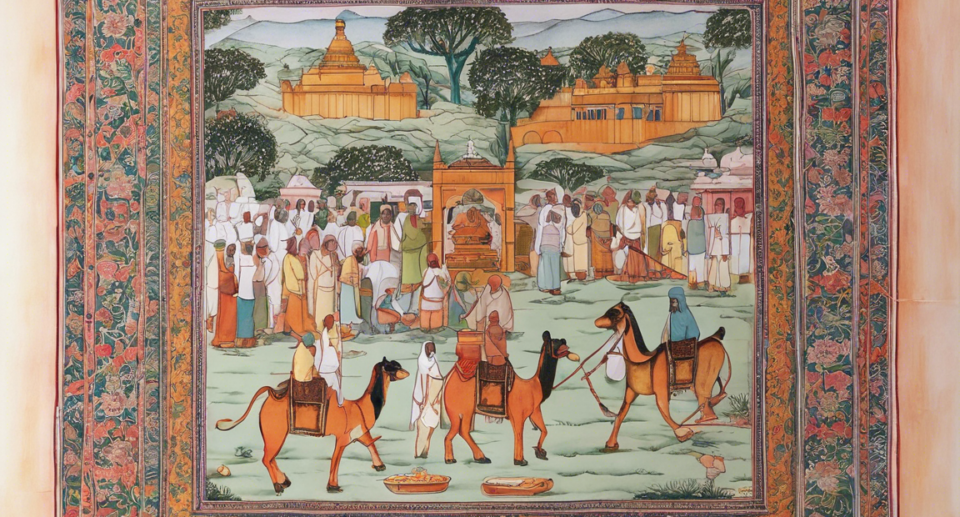Unraveling ‘Chakravyuham’: Navigating the Trap

Introduction
In the vast sea of ancient Indian epics, the Mahabharata stands as a timeless epic that not only narrates tales of valor and conflict but also imparts profound wisdom and life lessons. Among the numerous incidents narrated in this epic, the ‘Chakravyuham’ episode holds a significant place for its strategic complexity and the lessons it offers in navigating treacherous situations. The ‘Chakravyuham’ is a military formation employed in battle, famously known for being a formidable trap that is challenging to penetrate and escape from. Let us delve deeper into the intricacies of the ‘Chakravyuham’ and understand the strategic and symbolic significance it holds in the Mahabharata.
Understanding the Chakravyuham
The ‘Chakravyuham’ is a circular military formation that resembles a spiral maze, designed to entrap and overwhelm the enemy forces. It is considered a complex and deceptive formation requiring precise knowledge and skill to both penetrate and escape from. The formation is attributed to the Kaurava prince Dronacharya, a master strategist and warrior, who deployed it during the battle of Kurukshetra against the Pandavas.
Components of the Chakravyuham
-
Central Point: The core of the ‘Chakravyuham’ where the most skilled and powerful warriors are positioned to defend and control the formation.
-
Spiraling Arms: The concentric layers of the formation that create a maze-like structure, making it challenging for the enemy to navigate through.
-
Entry and Exit Points: Strategic openings in the formation that are tightly guarded, allowing only a select few to enter and exit the ‘Chakravyuham’.
-
Defensive Positions: Skilled warriors strategically placed at key points within the formation to thwart any attempts of breaching the defenses.
Strategic Significance
The ‘Chakravyuham’ exemplifies the art of warfare and strategic thinking, demonstrating the importance of planning, coordination, and deception in battle. It serves as a symbol of the challenges and obstacles one may encounter in life, emphasizing the need for foresight, intelligence, and adaptability to overcome adversities.
Lessons from the Chakravyuham
-
Strategic Planning: The ‘Chakravyuham’ underscores the significance of meticulous planning and foresight in confronting complex challenges, whether in warfare or in life.
-
Resource Management: Efficient allocation and utilization of resources are vital in navigating difficult situations and ensuring success against formidable odds.
-
Adaptability: The ability to adapt to changing circumstances and think on your feet is crucial in outwitting traps and overcoming obstacles.
-
Teamwork and Collaboration: Just as the Pandavas collaborated and devised a strategy to counter the ‘Chakravyuham’, teamwork and coordination play a pivotal role in surmounting challenges collectively.
Symbolism of the Chakravyuham
Beyond its strategic implications, the ‘Chakravyuham’ holds symbolic significance in the Mahabharata, representing the complex web of life’s challenges and dilemmas. It signifies the cyclical nature of existence, with individuals constantly navigating through various entanglements and traps in their journey towards self-realization and enlightenment.
FAQs
-
What is the origin of the term ‘Chakravyuham’?
The term ‘Chakravyuham’ is derived from two words: ‘Chakra,’ meaning circle or wheel, and ‘Vyuha,’ meaning formation. Together, it refers to a circular military formation resembling a maze. -
Who is credited with devising the Chakravyuham?
Dronacharya, the revered teacher and martial arts guru in the Mahabharata, is credited with devising the Chakravyuham formation. -
How did the Pandavas navigate through the Chakravyuham?
The Pandavas, under the guidance of Lord Krishna, devised a strategy where Abhimanyu, Arjuna’s son, penetrated the Chakravyuham but met an unfortunate fate as he did not know how to exit the formation. However, the Pandavas later avenged his death by successfully breaching the Chakravyuham. -
What are some modern-day applications of the lessons from the Chakravyuham?
The principles of strategic planning, adaptability, teamwork, and resource management derived from the Chakravyuham can be applied in various fields such as business, management, sports, and personal development to navigate challenges effectively. -
What moral lessons can be drawn from the Chakravyuham episode?
The Chakravyuham episode imparts lessons on the consequences of arrogance, the importance of humility, the impact of strategic thinking, and the need for resilience and perseverance in the face of adversity.
Conclusion
The ‘Chakravyuham’ episode in the Mahabharata serves as a timeless reminder of the intricacies of strategy, the challenges of navigating traps, and the importance of resilience and teamwork in overcoming adversities. By unraveling the mysteries of the ‘Chakravyuham’ and imbibing its valuable lessons, one can equip oneself with the wisdom and insight needed to navigate the complex labyrinths of life with courage and foresight.





